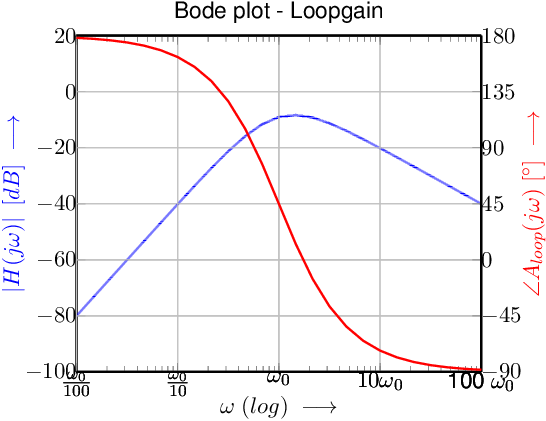An answer:
An answer:

For these plots, . Asymptotic the .
An answer:
This loopgain has
phase shift at
and has
phase shift at .
Somewhere in the middle, close to ,
the phase shift of the loopgain is .
Using a well selected
the circuit can oscillate harmonically.
An answer:
This has a real numerator and a complex denominator. If the denominator is real for a specific non-zero and finite then the circuit can oscillate harmonically.
This is obviously possible for the derived loopgain.
An answer:
Substitute this in the next equation to get the required value of :
An answer:
Not applicable.